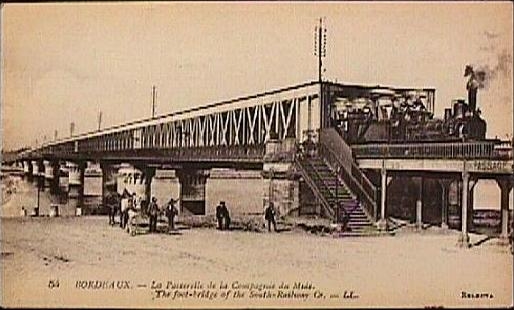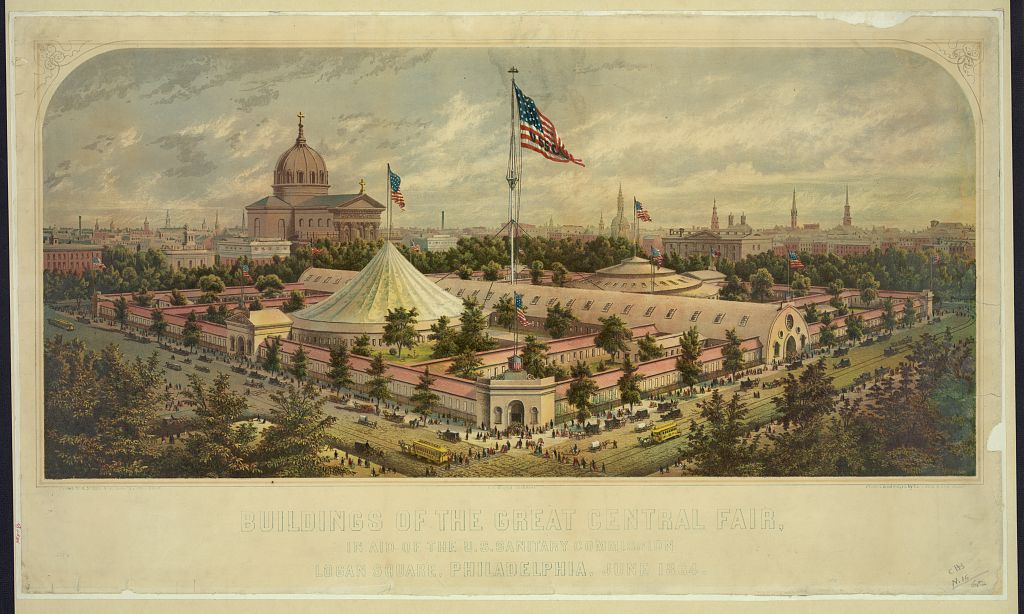|
Jacobo Zóbel
Jacobo Zóbel y Zangróniz (October 12, 1842, Intramuros, Manila – October 7, 1896, Manila) was a Filipino pharmacist and businessman. He is the patriarch of the prominent Philippine Zóbel de Ayala family. He is also a lead figure in the rise of Filipino nationalism. Biography Jacobo Zóbel y Zangroniz was born on October 12, 1842, in the Philippine capital of Manila. He was the only son in a family of three children of the German people, German immigrant Jacobo Zóbel and the Spanish people, Spanish Ana Zangróniz, a daughter of a judge of the Real Audiencia of Manila. His father worked in Manila as a pharmacist, with his own pharmacy under the name Botica de Don Jacobo Zóbel on Calle Real in Intramuros. His grandfather, Johannes Andreas Zóbel, arrived in the Philippines from Hamburg, Germany in 1832, together with his wife, Cornelia Hinsch, and their son, Jakob. Johannes Andreas Zóbel came from a long line of German pharmacists and established the Botica Zóbel pharmacy i ... [...More Info...] [...Related Items...] OR: [Wikipedia] [Google] [Baidu] |
Manila
Manila, officially the City of Manila, is the Capital of the Philippines, capital and second-most populous city of the Philippines after Quezon City, with a population of 1,846,513 people in 2020. Located on the eastern shore of Manila Bay on the island of Luzon, it is classified as a Cities of the Philippines#Independent cities, highly urbanized city. With , Manila is one of the world's List of cities proper by population density, most densely populated cities proper. Manila was the first chartered city in the country, designated bPhilippine Commission Act No. 183on July 31, 1901. It became autonomous with the passage of Republic Act No. 409, "The Revised Charter of the City of Manila", on June 18, 1949. Manila is considered to be part of the world's original set of global cities because its commercial networks were the first to extend across the Pacific Ocean and connect Asia with the Hispanic America, Spanish Americas through the Manila galleon, galleon trade. This marked t ... [...More Info...] [...Related Items...] OR: [Wikipedia] [Google] [Baidu] |
Spanish Cortes
The (; ) are the bicameral legislative chambers of Spain, consisting of the Congress of Deputies (the lower house) and the Senate (the upper house). The Congress of Deputies meets in the Palacio de las Cortes. The Senate meets in the Palacio del Senado. Both are in Madrid. The Cortes are elected through universal, free, equal, direct and secret suffrage, with the exception of some senatorial seats, which are elected indirectly by the legislatures of the autonomous communities. The are composed of 615 members: 350 Deputies and 265 Senators. The members of the serve four-year terms, and they are representatives of the Spanish people. In both chambers, the seats are divided by constituencies that correspond with the fifty provinces of Spain, plus Ceuta and Melilla. However, each island or group of islands within the Canary and Balearic archipelagos forms a different constituency in the Senate. As a parliamentary system, the Cortes confirm and dismiss the Prime Ministe ... [...More Info...] [...Related Items...] OR: [Wikipedia] [Google] [Baidu] |
Real Academia De La Historia
The Royal Academy of History (, RAH) is a Spanish institution in Madrid that studies history "ancient and modern, political, civil, ecclesiastical, military, scientific, of letters and arts, that is to say, the different branches of life, of civilisation, and of the culture of the Spanish people". Spanish people in this regard are understood to be citizens of the Kingdom of Spain or the indigenous people of its predecessors, or their descendants. The academy was established by royal decree of Philip V of Spain on 18 April 1738. Its official publication is the '' Boletín de la Real Academia de la Historia''. Building Since 1836 the academy has occupied an 18th-century building designed by the neoclassical architect Juan de Villanueva. The building was originally occupied by the Hieronymites, a religious order. It became available as a result of legislation in the 1830s confiscating monastic properties (the ecclesiastical confiscations of Mendizábal). Collections As former ... [...More Info...] [...Related Items...] OR: [Wikipedia] [Google] [Baidu] |
Bank Of The Philippine Islands
The Bank of the Philippine Islands ('';'' '','' commonly known as BPI; ) is a universal bank in the Philippines. It is the oldest bank in both the Philippines and Southeast Asia. It is the fourth largest bank in terms of assets, the second largest bank in terms of market capitalization, and one of the most profitable banks in the Philippines. The bank has a network of over 900 branches in the Philippines, Hong Kong and Europe, and more than 3,000 Automated teller machine, ATMs and CDMs (cash deposit machines). BPI was founded during the History of the Philippines (1521–1898), Spanish colonial era of the Philippines as El Banco Español Filipino de Isabel II. It provided credit to the National Treasury and printed and issued the Philippine peso fuerte, a precursor to today's Philippine peso. History Colonial period BPI was established on August 1, 1851, as the "El Banco Español Filipino de Isabel II" (), named after the queen of Spain, Queen of Spain, Isabella II, the d ... [...More Info...] [...Related Items...] OR: [Wikipedia] [Google] [Baidu] |
Ayala Corporation
Ayala Corporation (, formerly ''Ayala y Compañía''; ) is the publicly listed holding company for the diversified interests of the Ayala Group. Founded in the Philippines by Domingo Róxas and Antonio de Ayala during Spanish colonial rule, it is the country's oldest and largest conglomerate. The company has a portfolio of diverse business interests, including investments in retail, education, real estate, banking, telecommunications, water infrastructure, renewable energy, electronics, information technology, automotive, healthcare, management, and business process outsourcing. As of November 2015, it is the country's largest corporation in terms of assets ($48.7 billion). History ''Ayala y Compañía'' was established in 1876 and traces its origins to Casa Róxas, a partnership established in 1834 between landowner and entrepreneur Domingo Róxas and his employee Antonio de Ayala.https://www.cia.gov/readingroom/docs/CIA-RDP90-00494R001100710133-1.pdf Their enterprise ... [...More Info...] [...Related Items...] OR: [Wikipedia] [Google] [Baidu] |
Ayala Bridge
The Ayala Bridge () is a steel truss bridge over the Pasig River in Manila, Philippines. It connects the districts of Ermita and San Miguel, Manila, San Miguel, passing over the western tip of Isla de Convalecencia. It carries Circumferential Road 1 (C-1) and N180 highway (Philippines), National Route 180 (N180), linking Ayala Boulevard in Ermita to P. Casal Street in San Miguel. History Ayala Bridge was originally two separate timber-built bridges (divided into the San Miguel and Concepcion sections after each side's point of origin, converging into Isla de Convalecencia, Isla de la Convalecencia) when it was first built in 1872 by Don (honorific), Don Zobel de Ayala family#Jacobo Zóbel (1842-1896), Jacobo Zóbel y Zangroniz of Ayala y Compañía (now Ayala Corporation). Roughly ten years after opened, the bridge's condition had degenerated considerably. In 1899, the San Miguel portion collapsed, with the Concepcion portion following suit months later. In 1908, the bridge be ... [...More Info...] [...Related Items...] OR: [Wikipedia] [Google] [Baidu] |
Gustave Eiffel
Alexandre Gustave Eiffel ( , ; Bonickhausen dit Eiffel; 15 December 1832 – 27 December 1923) was a French civil engineer. A graduate of École Centrale des Arts et Manufactures, he made his name with various bridges for the French railway network, most famously the Garabit Viaduct. He is best known for the world-famous Eiffel Tower, designed by his company and built for the Exposition Universelle (1889), 1889 Universal Exposition in Paris, and his contribution to building the Statue of Liberty in New York. After his retirement from engineering, Eiffel focused on research into meteorology and aerodynamics, making significant contributions in both fields. Early life Alexandre Gustave Eiffel was born in France, in the Côte-d'Or, the first child of Catherine-Mélanie (née Moneuse) and Alexandre Bonickhausen dit Eiffel. He was a descendant of Marguerite Frédérique (née Lideriz) and Jean-René Bönickhausen, who had emigrated from the Germany, German town of Marmagen and set ... [...More Info...] [...Related Items...] OR: [Wikipedia] [Google] [Baidu] |
Jacobo Zobel De Zangroniz Patriarch Tomb
Jacobo is both a surname and a given name of Spanish origin. Based on the name Jacob. Notable people with the name include: Surname: *Alfredo Jacobo (born 1982), Olympic breaststroke swimmer from Mexico * Cesar Chavez Jacobo, Dominican professional basketball player * Clara Jacobo, Italian opera singer *Jordan Jacobo, American actor, writer and director Given name: *Jacobo Majluta Azar (1934 – 1996), politician from Dominican Republic, was president for 43 days in 1982 *Jacobo Arenas (1924–1990), Colombian guerrilla and ideological leader of FARC *Dan Jacobo Beninson (1931–2003), Argentine radiation expert *Jacobo Bolbochán (1906–1984), Argentine chess master *Jacobo Borges (born 1931), contemporary, neo-figurative Latin-American artist *Jacobo Díaz (born 1976), former professional male tennis player from Spain * Juan Jacobo Fernandez (1808–1860), Franciscan friar, a martyr who achieved beatification * Jacobo Fijman (1898–1970), Argentine poet born in Bessarabia, now ... [...More Info...] [...Related Items...] OR: [Wikipedia] [Google] [Baidu] |
1876 World’s Fair
The Centennial International Exhibition, officially the International Exhibition of Arts, Manufactures, and Products of the Soil and Mine, was held in Philadelphia, Pennsylvania, from May 10 to November 10, 1876. It was the first official world's fair to be held in the United States and coincided with the centennial anniversary of the Declaration of Independence's adoption in Philadelphia on July 4, 1776. It was held in Fairmount Park along the Schuylkill River on fairgrounds designed by Herman J. Schwarzmann. Nearly 10 million visitors attended the exposition, and 37 countries participated in it. Precursor The Great Central Fair on Logan Square in Philadelphia, in 1864, also known as the Great Sanitary Fair, was one of the many United States Sanitary Commission's Sanitary Fairs held during the American Civil War. The fairs provided a creative and communal means for ordinary citizens to promote the welfare of Union Army soldiers and dedicate themselves to the surviv ... [...More Info...] [...Related Items...] OR: [Wikipedia] [Google] [Baidu] |




